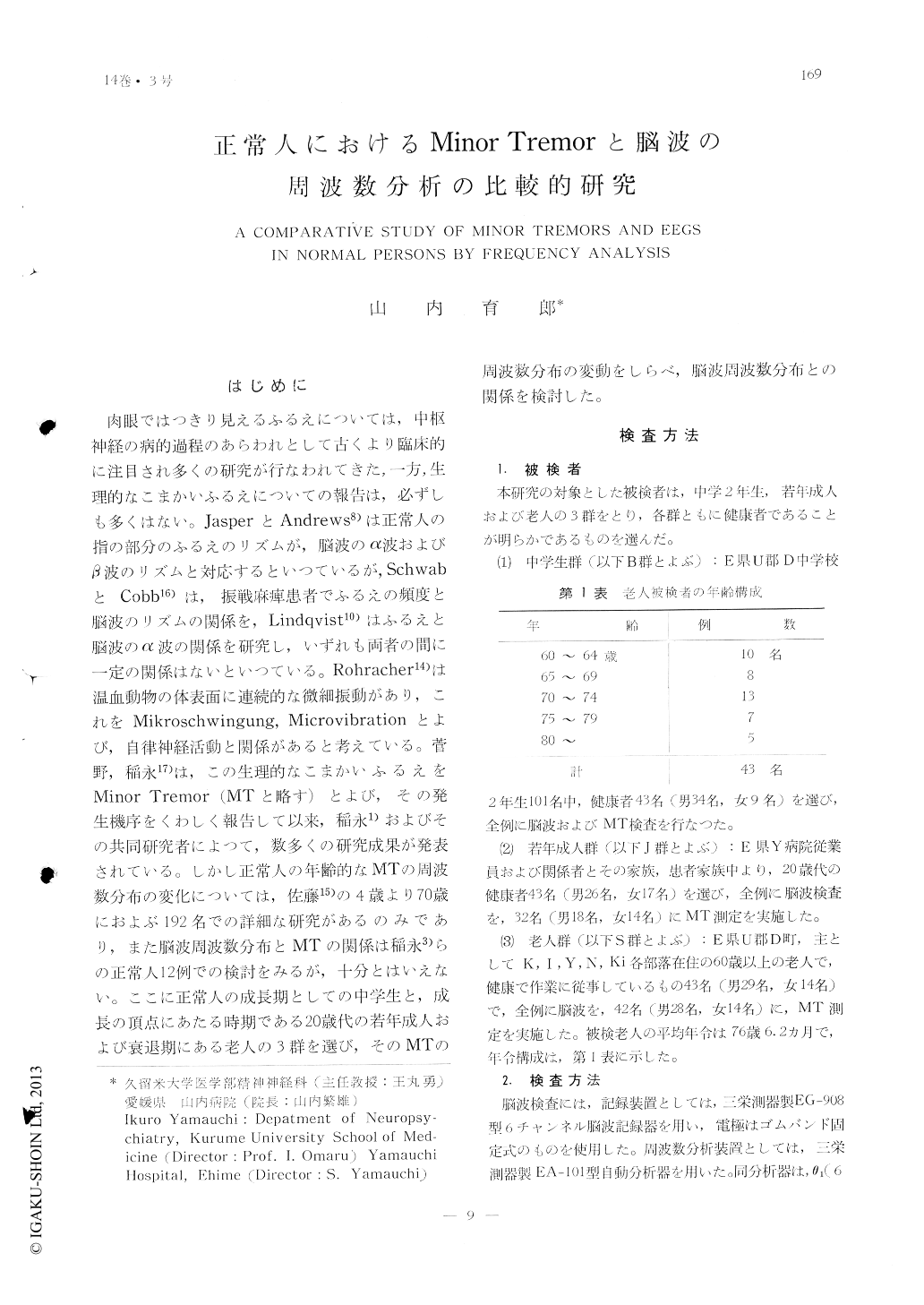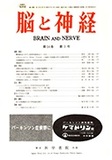Japanese
English
- 有料閲覧
- Abstract 文献概要
- 1ページ目 Look Inside
はじめに
肉眼ではつきり見えるふるえについては,中枢神経の病的過程のあらわれとして古くより臨床的に注目され多くの研究が行なわれてきた,一方,生理的なこまかいふるえについての報告は,必ずしも多くはない。JasperとAndrews8)は正常人の指の部分のふるえのリズムが,脳波のα波およびβ波のリズムと対応するといつているが,SchwabとCobb16)は,振戦麻痺患者でふるえの頻度と脳波のリズムの関係を,Lindqvist10)はふるえと脳波のα波の関係を研究し,いずれも両者の間に一定の関係はないといつている。Rohracher14)は温血動物の体表面に連続的な微細振動があり,これをMikroschwingung, Microvibrationとよび,自律神経活動と関係があると考えている。菅野,稲永17)は,この生理的なこまかいふるえをMinor Tremor (MTと略す)とよび,その発生機序をくわしく報告して以来,稲永1)およびその共同研究者によつて,数多くの研究成果が発表されている。しかし正常人の年齢的なMTの周波数分布の変化については,佐藤15)の4歳より70歳におよぶ192名での詳細な研究があるのみであり,また脳波周波数分布とMTの関係は稲永3)らの正常人12例での検討をみるが,十分とはいえない。ここに正常人の成長期としての中学生と,成長の頂点にあたる時期である20歳代の若年成人および衰退期にある老人の3群を選び,そのMTの周波数分布の変動をしらべ,脳波周波数分布との関係を検討した。
The Minor Tremor (MT) and EEG were investigated by automatic frequency analyser, and the relation between the frequency spec-tra of MT and EEG were studied in normal subjects.
The subjects were divided into 3 groups, namely age of puberty (2nd class students of middle school), young adult (20~29 years) and elderly group (over 60 years old).
I. Frequency distribution of MT
1) The appearance of band α (8~12.5c/s) was most frequent in all subjects.
2) It was found that α3 (11~12.5c/s) ap-peared most frequently in students, α2 (9.5~11c/s) appeared most frequently in young adults and seniles, and that in seniles, the α1, (8~9.5c/s) appearance was resembling the α2 appearance. It seems that elderly subjects show a slower rhythm of MT.
3) The α dominant type was seen most often in all groups and the other types (i. e. θ dominant type or β dominant type) were less in young adults than in students and seniles.
4) Percentage of β>θ type was 72.2% in students, 53.2% in young adults and 52.4% in the senile group.
II. Relation between frequency distribution of EEG and MT.
The frequency spectra of MT were not directly related to those of EEG.

Copyright © 1962, Igaku-Shoin Ltd. All rights reserved.


